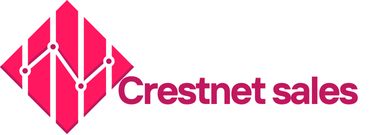Understanding Social Media Algorithms
Social media algorithms play a crucial role in determining content visibility across platforms like Instagram and TikTok. These algorithms analyse a variety of factors to decide what content surfaces on users’ feeds. They prioritise posts based on relevance to individual users, which is assessed by examining interaction history, interests, and even the nature of your connections.
Engagement is pivotal in influencing visibility. This includes likes, comments, shares, and views. Content with higher engagement rates is more likely to be promoted by the algorithm, reaching a broader audience. Thus, creators should focus on crafting engaging content that encourages user interaction to maintain and enhance their content reach.
In parallel : Top Email Automation Strategies for UK Specialty Coffee Shops to Boost Customer Loyalty
Adapting to algorithm changes on platforms is necessary due to their frequent updates. Here are a few strategies to consider:
- Stay informed about platform updates and best practices.
- Experiment with different content formats like reels or stories.
- Encourage followers to enable notifications for your posts.
By understanding and responding strategically to these algorithms, creators can boost their content’s reach and maintain their presence in the ever-evolving social media landscape.
Crafting a Unique Brand Identity
A strong brand identity is crucial for dance schools aiming to stand out in the UK market. This unique identity encapsulates the values and essence of the school, making it easily recognizable and relatable to its target audience. Key elements include a memorable logo, a consistent color scheme, and a compelling brand story that resonates with the local community.
In the same genre : Discover top video production agencies for your business
In the UK dance sector, several schools have successfully crafted distinct identities. For instance, one dance academy leveraged its location in an iconic city to create a vibrant urban theme, while another highlighted its commitment to inclusivity by showcasing diverse dance styles and cultures in its branding. These examples demonstrate the impact of aligning brand messaging with what matters most to their clients.
To achieve this alignment, dance schools should consider their audience’s preferences. Engaging with current students and organizing community events can offer valuable insights into these preferences. Creative marketing campaigns that reflect these interests can also enhance a school’s brand identity. By implementing such strategies, dance schools in the UK can effectively cultivate a brand identity that not only attracts new students but also nurtures existing relationships.
Developing Targeted Content Strategies
Creating a successful content strategy requires understanding your audience thoroughly. This ensures that each post resonates and engages effectively, especially in a niche like dance schools.
Identifying Your Audience
Identifying and defining your target audience are crucial first steps in any content strategy. Analyse demographics, preferences, and habits to pinpoint who your dance school should target. Tools designed for audience research, such as survey platforms and social media analytics, provide invaluable insights. For dance schools, platforms like Facebook Insights or Instagram Analytics help understand followers’ age groups, locations, and interests. This understanding allows tailoring of content to specific needs and preferences.
Creating Engaging Content
Social media is a powerful tool for engaging audiences, offering a range of content types that captivate. Dance schools can blend promotional posts with value-driven content like tutorials or behind-the-scenes snippets. Use visual storytelling to showcase performances and classes, making content lively and attractive.
Utilizing Viral Trends
Leverage viral trends to gain visibility and boost engagement. Dance challenges, such as those on TikTok, allow schools to align with popular trends while showcasing their talent. Tips for creating viral content include short, entertaining videos and collaborating with influencers. This tailored approach keeps the audience hooked and excited.
Leveraging Popular Platforms
Dance schools in the UK can significantly benefit from utilising social media platforms to engage their audience and expand their reach. Among the most effective are Instagram, TikTok, and Facebook. These platforms each offer unique features that can enhance engagement and visibility.
Instagram is renowned for its visual appeal, making it ideal for showcasing dance performances through images and short videos. The use of stories and reels can capture spontaneous and engaging moments, which often attract higher audience interaction.
TikTok, on the other hand, thrives on creativity and virality. Its algorithm favours innovative and catchy content, which dance schools can exploit by participating in popular challenges and trends. TikTok’s format encourages short, dynamic videos that can quickly amass a large following.
Facebook remains a staple for building community and maintaining relationships through events and groups. Its more detailed posts support informative content about classes and events, fostering a loyal and informed audience.
For platform-specific content creation, consider tailoring your posts to align with each platform’s strengths. Instagram content should focus on aesthetics, while TikTok demands creativity and trend-awareness. Facebook requires community-focused, informative, and detailed content to maintain engagement.
Building and Engaging a Community
Building a community has become vital, especially for dance schools aiming to enhance loyalty and support. Community engagement strengthens the connection between schools and their audience, fostering a sense of belonging and commitment. But how does audience interaction contribute to this process? Community engagement invites participants to share experiences, insights, and aspirations with each other, creating a dynamic flow of interaction and dialogue among members.
For dance schools, fostering interaction might involve initiating challenges or hosting Q&A sessions where enthusiasts can interact directly with instructors or peers. This interactive approach not only amplifies excitement but also deepens the connection with existing followers, while simultaneously attracting new members.
Several dance schools have successfully navigated the digital terrain to build vibrant online communities. Their strategies often involve using social media platforms to share user-generated content, facilitating live sessions, and organizing online events. These initiatives not only keep the community active and engaged but also increase visibility and attract a broader audience. As these examples demonstrate, thoughtful community engagement strategies can significantly contribute to a dance school’s success, encouraging interaction and participation while building loyalty and lasting support.
Analyzing Performance and Optimizing Strategies
Understanding analytics is crucial for any dance school aiming for success. By tracking social media performance metrics, schools can measure their impact and refine their strategies. But what exactly should you be measuring?
Start with Key Performance Indicators (KPIs). These might include engagement rates, such as likes, shares, and comments, which reflect how actively your audience is interacting with your content. Additionally, monitor reach and impressions to understand how widely your posts are being seen. For dance schools, these metrics are invaluable indicators of developing interest and brand presence.
Strategy optimization thrives on data insights. By analysing these metrics, you can identify which content resonates with your audience. Are video tutorials generating more traction than event photos? Use these insights to tailor your strategy, enhancing the types of content that foster the most engagement. Audience feedback, whether direct or through sentiment analysis, can also provide substantial clues on how to adjust your messaging and activities.
Optimizing your content strategy based on data allows dance schools not only to maintain but also to expand their reach and engagement. By continuously monitoring and refining performance metrics, you ensure your strategy remains dynamic and effective.










